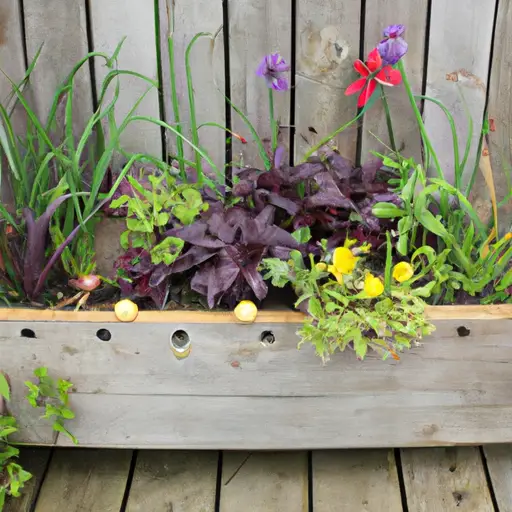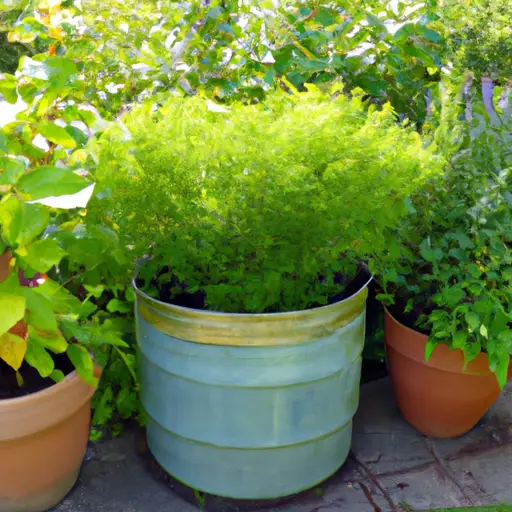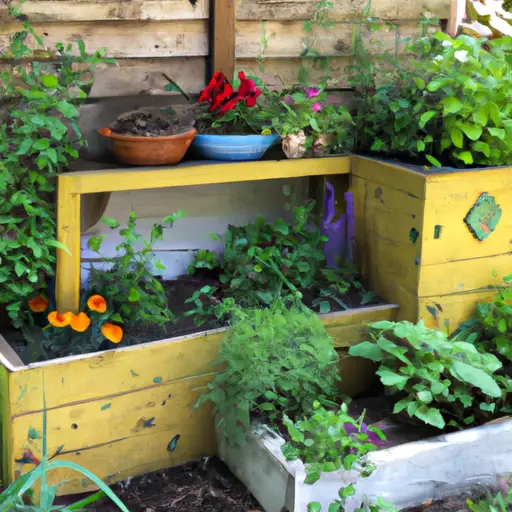Container Gardening: Making the Most of Limited Space
In today’s fast-paced and urbanized world, many people find themselves living in small apartments or houses with limited outdoor space. However, this should not discourage anyone from pursuing their love for gardening. Container gardening is a versatile and practical solution that allows individuals to create beautiful and productive gardens even in the smallest of spaces.
What is Container Gardening?
Container gardening involves growing plants in containers such as pots, planter boxes, hanging baskets, or even recycled materials like old buckets or tires. This method of gardening offers numerous advantages, making it an ideal choice for those dealing with spatial limitations.
Advantages of Container Gardening
1. Maximizing Space: The primary advantage of container gardening is the ability to make the most out of limited space. Whether you have a balcony, rooftop, or just a small window ledge, containers can easily be arranged to fit any available area. By utilizing vertical space with hanging planters or wall-mounted containers, you can further expand your garden without taking up valuable floor space.
2. Easy Mobility: Unlike traditional gardens that are fixed in one place, container gardens provide the convenience of mobility. This mobility proves beneficial in various situations such as changing weather conditions or rearranging your garden layout for aesthetic purposes.
3. Pest Control: Container gardening helps reduce the risk of pest infestations compared to traditional gardens. By keeping plants off the ground and isolating them from potential pests and diseases in the soil, you’ll have better control over your plants’ health and growth.
4. Accessibility: For individuals with physical limitations or disabilities, container gardening provides easy accessibility. Containers can be placed at a height suitable for comfortable reach and maintenance activities like watering and pruning.
Choosing Containers for Your Garden

When it comes to selecting containers for your garden, there are several factors to consider:
1. Size: The size of your container should correlate with the type and size of the plant you wish to grow. Larger plants require more space for their roots to grow and support their growth aboveground.
2. Material: Containers come in a variety of materials, including clay, plastic, wood, metal, and even fabric. Each material has its advantages and disadvantages regarding durability, insulation, weight, and aesthetic appeal. Ultimately, choose a material that suits your needs and preferences.
3. Drainage: Proper drainage is essential for container gardening to prevent waterlogging and root rot. Ensure your containers have drainage holes at the bottom or use a layer of gravel or broken pottery to facilitate proper water flow.
4. Aesthetics: Container gardening is not just about functionality; it also offers an opportunity to enhance the visual appeal of your space. Consider the colors, textures, and styles of containers that complement your overall garden design.
Choosing Plants for Container Gardening
With container gardening, you have endless choices when it comes to plant selection. However, certain plants are particularly well-suited for container growth:
1. Herbs: Culinary herbs like basil, thyme, rosemary, and mint thrive in containers due to their compact size and preference for well-drained soil.
2. Salad Greens: Leafy greens such as lettuce varieties and spinach make excellent choices for container gardens as they require minimal space but provide abundant harvests.
3. Dwarf Varieties: Look for compact or dwarf varieties of vegetables like tomatoes, peppers, beans, and cucumbers that are specifically bred for container gardens.

4. Flowers: Brighten up your container garden with colorful flowers like marigolds, pansies, petunias, or geraniums that add beauty to any small space.
Tips for Successful Container Gardening
To ensure a successful container garden in limited spaces:
1. Soil Quality: Use high-quality potting soil with good drainage properties as it provides essential nutrients while allowing excess water to drain away.
2. Watering: Containers tend to dry out quickly, so regular watering is crucial. Monitor the moisture levels of your plants and adjust the frequency of watering accordingly.
3. Fertilization: Container plants rely on you for nutrients since they have limited access to natural soil. Use slow-release fertilizers or organic compost to keep your plants healthy and fruitful.
4. Sunlight: Most plants require a good amount of sunlight for healthy growth. Place your containers in areas that receive at least six hours of direct sunlight each day.
5. Maintenance: Regularly monitor your container garden for pests, diseases, and any signs of nutrient deficiency or overgrowth. Prune, trim, and deadhead as needed to maintain plant health and aesthetics.
Conclusion
Container gardening presents an excellent opportunity to enjoy the benefits of gardening, regardless of limited space. By choosing suitable containers, selecting appropriate plants, and following essential care guidelines, even the smallest balconies or windowsills can transform into lush green oases filled with vibrant flowers, fresh herbs, or vegetables ready for harvest. Embrace container gardening as an innovative way to maximize your limited space while fostering a love for nature and nurturing living things.













